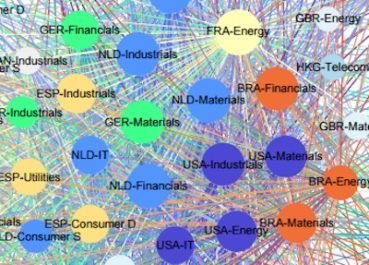
Good retirement income ideas, like comets, have a way of appearing, disappearing, and circling back again. They never become bad ideas, per se. It’s just that changing interest rates, regulations and demographics create either fertile or infertile conditions for them.
The immediate variable annuity (IVA) is one of those good ideas. Like its cousin, the single-premium immediate annuity (SPIA), an IVA pays out a mix of earnings, principal and so-called mortality credits (the benefit of longevity risk pooling) each month. An IVA improves on a SPIA, however, by offering the potential for rising income payments in retirement.
For a decade, as other types of annuities have gained or lost popularity, a team at Chicago-based Achaean Financial—founded by former CEO of Lincoln Retirement Lorry Stensrud, with former Ibbotson Associate president Mike Henkel and Milliman actuary Tim Hill—has been waiting for the stars to align in favor of a specific IVA design, one that Stensrud and Hill were granted a patent for in 2014, five years after filing for it.
Their product—a chassis that Achaean calls Income Plus+ but which life insurers and broker-dealers are likely to manufacture and distribute under a variety of names and with a variety of issuer- or distributor-specific customizations—is now ready for prime time, according to Stensrud and Henkel. They claim to be close to announcing their first underwriting and distribution partners.
“We’re going full speed ahead to get our core group of life companies aligned with distribution partners,” Stensrud (below, right) told RIJ recently. “We’re past the talking stage with our partners,” said Henkel, who is president of Achaean Solutions and the firm’s technology lead. Besides running Ibbotson, Henkel was once co-head of Envestnet’s Portfolio Management Consultants Group and lead of its Retirement Services Group.
The two men imagine Income Plus+ as the successor to the variable annuity with the guaranteed lifetime withdrawal benefit (VA/GLWB), and a much-needed solution to the headaches that in-force VA/GLWBs have created. They think it has something for everyone in the retirement income value chain: cost-effective guaranteed income with upside potential for retirees, a potential exit strategy from high-fee, capital-intensive VA/GLWB contracts for insurance companies and advisors at broker-dealers, and as a potential rollover solution or income option for people leaving retirement plans.
How ‘Income Plus+’ works
Even in the arcane world of annuities, the mechanics of an IVA aren’t the easiest to describe or understand. When someone buys an IVA, the insurer calculates an initial payment based on the client’s age, the premium, and an “assumed interest rate,” or AIR. The AIR (which may be as high as 3.5% or more in a “normal” interest rate climate or as low as 1% in today’s climate) is a provisional best estimate of average future returns. The initial payment represents not a fixed dollar amount but a fixed number of units.
The value of the units fluctuates. The issuer invests the premia of groups of policyholders in pools of stocks and other risky assets. If the assets appreciate in value, so do the value of the units. The number of units never goes down, and the contract may or may not guarantee that the monthly payment won’t go down.
Income Plus+ works much like a classic IVA, but with a couple of important differences. These differences allow it to offer not only the attraction of upside potential, but also the flexibility—i.e., cash surrender value and a death benefit—that many retirees want. It even offers the potential, especially when asset prices are rising, for annual increases that match the inflation rate.
Achaean’s key innovation is a “banked amount.” It’s a cushion or buffer, funded by excess contract returns, from which the insurer can dip into either to support the guaranteed minimum payout during lean years, to pay inflation-based bonuses whenever the fund is liquid. “If the banked amount is positive and inflation is say 2% then the payment would go up by 2%,” said Henkel. “That would then be the new guaranteed payment for the rest of the annuitant’s life.”
In short, excess returns go into the banked amount before, and sometimes instead of, raising the client’s annual income. The banked amount becomes part of the insurer’s general fund and earns interest—for the insurer—at the general fund rate. The buffer is reminiscent to the “smoothing” accounts that some defined contribution plans in Europe use to spread risk among participants.
“You still invest the bulk of the premium in a way that provides a pooling effect and mortality credits,” Henkel told RIJ. “The insurer can invest in a way that’s reasonable to meet the guarantee. The banked amount helps self-capitalize the guarantee. The insurer can turn there first if there’s not enough return to make the guaranteed payments. Any excess return over what the insurance company needs to pay out becomes a death benefit at the end of the policy.”
“The banked amount belongs to the policyholder,” Stensrud said. “It can be taken as income, as death benefit or, in a future version, as a quasi-LTC (long-term care) benefit. Each life company will have variations on the theme as to how they payout increasing income.”
Something for everyone
“For the policyholder, we offer high initial income, a greater chance of increasing income, a guaranteed [inflation] ratchet and the lowest cost,” Stensrud told RIJ. There’s also liquidity.
“The cash surrender value of the product is simply premium-less-payments (minus any surrender charge schedule put in place by the underwriter). So, the policyholder will always get back his initial premium less any friction from a surrender charge.” The product will vary, he said.
The initial payout from an Income Plus+ contract, according to Stensrud, would be equal to 93% to 95% of the payout of a comparable SPIA, although that might vary from issuer to issuer. (Today, a $100,000 male single-life life-only SPIA pays about $540 a month, according to immediateannuities.com.) That would be comparable to the 5% payout from a typical living benefit on a variable annuity or indexed annuity.
Income Plus+, depending on its specific design, may also be better able to produce rising income in retirement than a VA/GLWB. During the income phase of a VA/GLWB, when fees of 3% or 4% and monthly withdrawals of 5% are simultaneously draining its cash value, there’s little chance, barring a raging bull market, of reaching the new high-water account balance that’s necessary for a step-up in monthly payouts.
 By comparison, “Our hurdle rate for increasing income is really low,” Henkel (at left) said. “The product only needs to earn 4% to provide an increase in annual income, versus 7% or 8% or 9% in a GLWB. When you’re taking withdrawals from a GLWB with high fees, they come out of the separate account. The separate account goes into a death spiral and you never get an increase in income.” In the IVA, unlike the VA/GLWB, “shortfalls don’t deplete the separate account,” he added. “That’s one of the big advantages.”
By comparison, “Our hurdle rate for increasing income is really low,” Henkel (at left) said. “The product only needs to earn 4% to provide an increase in annual income, versus 7% or 8% or 9% in a GLWB. When you’re taking withdrawals from a GLWB with high fees, they come out of the separate account. The separate account goes into a death spiral and you never get an increase in income.” In the IVA, unlike the VA/GLWB, “shortfalls don’t deplete the separate account,” he added. “That’s one of the big advantages.”
Relief for broker-dealers
Before it can find a consumer audience, Income Plus+ will need to appeal to broker-dealers and their advisors. Henkel and Stensrud say that the appetite among distributors for an IVA like Income Plus+ is strong, for two reasons. It has the potential for new sales to retiring baby boomers. It also has the potential to stimulate a new wave of 1035 exchanges out of high-fee VA/GLWBs that have no hope of generating step-ups in income. In order to justify a transfer, advisors must be able to offer a demonstrably suitable alternative to the existing contract. Income Plus+ could fill the bill.
“Brokers and advisors have billions of dollars worth of variable annuities on their books,” Henkel told RIJ. “A lot of the contracts are in qualified plans. Now they have they have fiduciary liability around them. It’s not the best thing for the investor. There’s nothing to move them to. There’s a real desire from the broker-dealer to have these products.” The insurers with all these VAs in force, tried to get rid of them with buyouts. The broker-dealers have hated them for sending those letters.”
Achaean is already working on technology to identify and document the suitability of those 1035 exchanges. “We’re asking, how can we help a broker-dealer or insurer approach these [variable annuity contract holders], determine who would be better off switching to an Income Plus+ annuity type and then documenting why a 1035 exchange is in the client’s best interest,” Henkel said.
“We can say to a broker-dealer, give us a dump of all your policyholders, their ages, annuity types—but no Social Security numbers—and we’ll run Monte Carlo simulations to compare the potential outcomes of their existing annuities with the results of switching to Income Plus+. Once advisors have that data, they can create personalized sales stories.”
An IVA could also be positioned as a suitable 1035 exchange destination for retirees who own annuities that don’t produce income, or who don’t want to exercise their right to convert those products to SPIAs. “Distributors want this as a settlement option to an investment-only variable annuity or for an accumulation indexed annuity,” said Stensrud.
Either an indexed annuity or a separate account annuity could be developed on the chassis of Income Plus+, he told RIJ. Advisors, he believes, could collect a commission on the sale of the IVA or charge asset-based fees on the investment in an IVA. In contrast, advisors consider money allocated to SPIAs as a lost source of revenue. “If advisor is actively advising, I don’t doubt that they can collect fee,” he said.
Relief for insurers
Like advisors, a lot of insurance companies would like to get billions of dollars of in-force VA/GLWBs off their books. The richness and flexibility of those products, which made them so marketable, translate into liabilities for the underwriters. It’s hard to reserve against the longevity risk embedded in a book of the guaranteed lifetime income riders, because it’s hard to predict how many policyholders will actually exercise them.
If contract owners swapped their in-force VA/GLWBs for IVAs based on the Income Plus+ chassis, their risk as well as their expenses could go down. “For the carrier, we have 50-70% lower capital requirements, product ROEs (return on equity) in the mid-teens to mid-twenties, ROAs (return on assets) of 100+ bps, reduced-vega risk (volatility) and hence lower hedging costs, and lower longevity risk,” Stensrud said.
“There are two or three hundred billion dollars worth of variable annuities that are sitting [on the books of life insurers like Prudential, MetLife and others],” Henkel added. “Thirty percent or 40% of the policyholders will be the right age [for a transfer to an IVA]. They will be ready to start taking income, and swapping to an Income Plus++ type product will be great for them.”
“In a worst-case scenario, where there is no excess return, the insurer has underwritten a SPIA,” he said. “You would like to see excess returns as early and as frequently as possible. You don’t necessarily want a home run right away. You’d want to hit singles until the bank account has built up a decent reserve. Then you can afford to take more risk with separate account assets.”
An objective analysis
To get a third-party opinion about Income Plus+, we spoke to Jeffrey Dellinger. The author of “The Handbook of Variable Income Annuities” (John Wiley & Sons, 2006) and a creator of i4Life, Lincoln Financial’s version of an IVA, Dellinger can claim to know as much as anyone alive about this type of product. He and Stensrud were at one time colleagues at Lincoln.
“The general concept of Lorry’s IVA design [is] on the right track. It provides a guaranteed benefit floor—which gives some individuals the degree of comfort they need to make an IVA purchase—while reducing the cost of it by also incorporating a benefit ceiling,” Dellinger wrote in a recent letter to RIJ, after studying the Income Plus+ patent.
“With a floor benefit attached to an IVA, it becomes more of a GLWB alternative. And if it is marketed as helping insurers extract themselves from a block of business with overly generous benefits and capital intensiveness, that holds appeal for insurers,” he wrote.
Dellinger prefers his own original IVA design, however, which applies all excess returns to future guaranteed income. “Instead of building up a side fund when favorable investment experience emerges, that design… applies any excesses to the purchase of additional annuity units payable on all future benefit payment dates,” he wrote.
Dellinger thinks that the opportunity for Income Plus+ may have been greater several years ago, when carriers were at their most eager to cleanse their books of the riskiest VA/GLWB contracts. But he believes that potential for success still exists and the product can stand on its own merits.
“Because insurers have redesigned their VA Guaranteed Living Benefits (VAGLWBs) to be less rich—once they finally performed better quantitative analyses of them and had their actions less governed by the VA/GLWB “arms race”—and because some of those insurers, in effect, bought back the overly generous benefits they had sold, the market for VA/GLWB to protected IVA transfers is perhaps a little less hot than back when Lorry began pursuit of this opportunity [in 2009]. The provisional patent application for this was filed in April 2009. Nonetheless, there’s still an opportunity.
“Acceptance of IVAs takes a while,” he wrote. “With lower costs, higher initial income, and substantially higher growth opportunities than GLWBs, IVAs have a lot of attractive aspects. All by themselves, even if GLWBs had never existed, IVAs have some attractive characteristics.
The Trump factor
His belief in the singular value of IVAs has sustained Stensrud’s effort to bring Income Plus+ (not to be confused with Financial Engines’ “Income+” program) to market for a decade. He filed for a patent in April 2010. “Lorry has been absolutely relentless in continuing to pound away at this,” Dellinger said. “It has to break through with underwriting and distribution at the same time. The problem has never been because it wasn’t a good product. It’s just that nobody wanted to be first.” Conditions now appear to be right, because Achaean has commitments from broker-dealers and insurers. He isn’t ready to disclose them, however.
The election of Donald Trump could pose a threat to the product, in part because the new president is expected to sweep away many Obama initiatives, including the Department of Labor’s conflict-of-interest rule. Although the rule worked in favor of Income Plus+–because of its potential as a compliant reason to recommend an IVA as a rollover target from a 401(k) plan or as a destination for a 1035 transfer—Stensrud doesn’t see it as essential to his product’s success.
“If the fiduciary standard of care is overridden by legislation, it doesn’t change the fact that the current VA with living benefit product-set is unsustainable for carriers, that fixed annuities are dead under Solvency II for non-U.S. carriers, and that the Income Plus+ features and benefits are better for both the underwriter and the individual in a head-to-head comparison in both general account and separate account versions,” he told RIJ.
“We’re going full speed ahead to get our core group of life companies aligned with distribution partners. The distributors all want to be in the retirement income space. We need highly rated, big name underwriters,” he added.
“The hardest part has been getting the insurers interested,” Henkel agreed. “They all know that this would be better than what they have. But they don’t want to create a product until they know that a distributor is going to sell it. Getting the broker-dealers on board—that’s what makes the difference. You need somebody who can say, ‘We will sell this.’ Once you break that dike, then the insurers will come in.”
© 2016 RIJ Publishing LLC. All rights reserved.






 By comparison, “Our hurdle rate for increasing income is really low,” Henkel (at left) said. “The product only needs to earn 4% to provide an increase in annual income, versus 7% or 8% or 9% in a GLWB. When you’re taking withdrawals from a GLWB with high fees, they come out of the separate account. The separate account goes into a death spiral and you never get an increase in income.” In the IVA, unlike the VA/GLWB, “shortfalls don’t deplete the separate account,” he added. “That’s one of the big advantages.”
By comparison, “Our hurdle rate for increasing income is really low,” Henkel (at left) said. “The product only needs to earn 4% to provide an increase in annual income, versus 7% or 8% or 9% in a GLWB. When you’re taking withdrawals from a GLWB with high fees, they come out of the separate account. The separate account goes into a death spiral and you never get an increase in income.” In the IVA, unlike the VA/GLWB, “shortfalls don’t deplete the separate account,” he added. “That’s one of the big advantages.”





